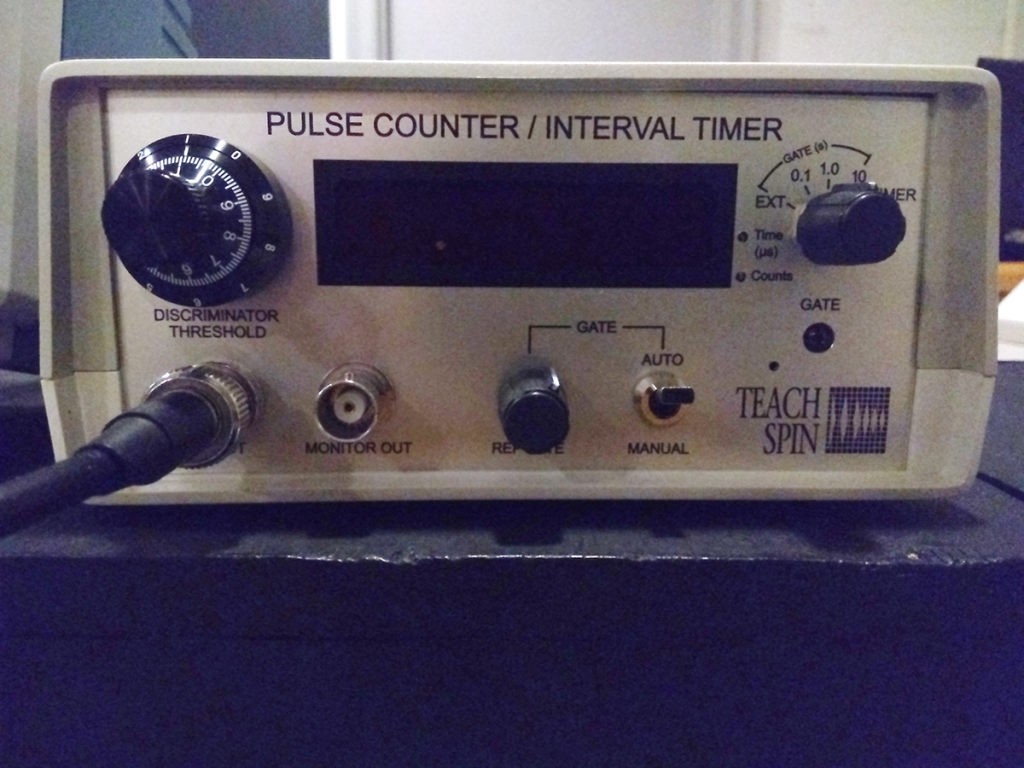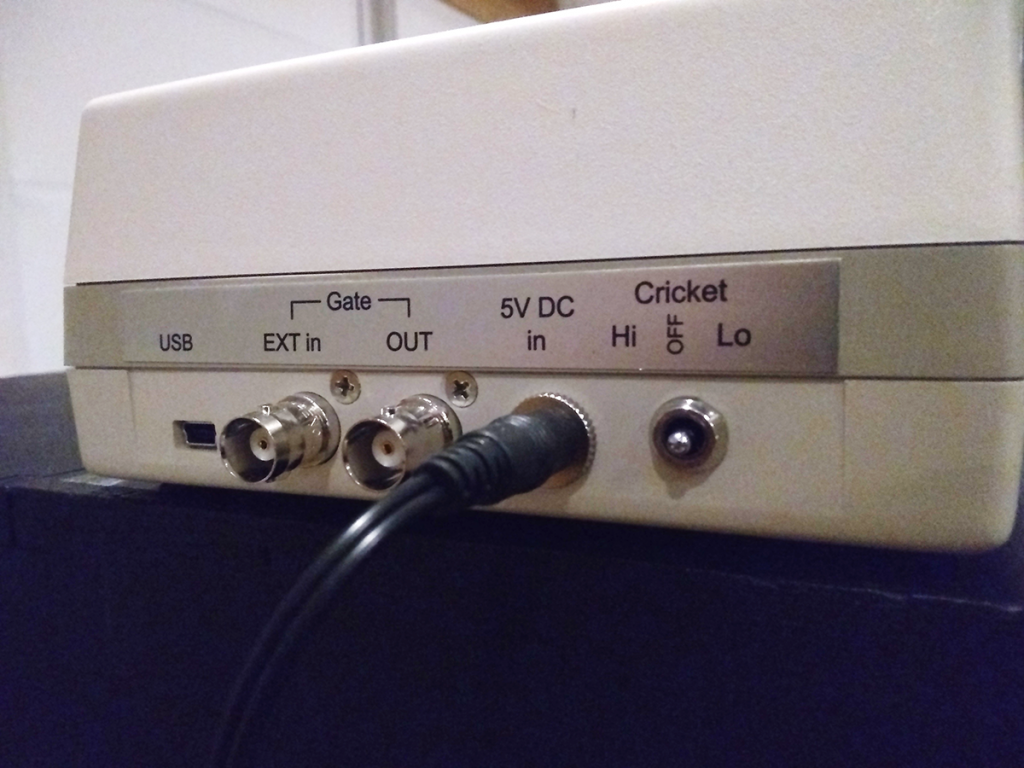
Behold: a box which counts! That’s it, for the most part. It counts pulses of positive voltage. Very quickly, and you can set some thresholds to tell it to count certain values but not others.
It also gates over an interval you set, so you can tell how many pulses it receives over, say, one second. It counts, displays the total, then counts again. Displays the new number.
We use these for our wave/particle duality lab experiment, which relies on counting individual photons. Yes, those. The teeny, massless quantum packets of energy, the messenger particles of electromagnetism. Light. It acts in non-intuitive ways, and the students who think “that’s amazing and I want more!” sometimes become Physics majors.
Part of using this box – just one aspect – is helping convince those students that only one photon at a time can be reaching the photomultiplier tube sensor. At the speed they move, a mind-boggling number of photons can zip through that meter-long box without bunching up. c in air isn’t all that far from c in a vacuum, so if your one-second counts aren’t remotely near 299,792,458 (adjusted for PMT sensitivity and other losses), you know some of those photons are pretty lonesome. Sometimes you need a little math to make sense of things you can’t directly sense.

One other fun aspect is a little switch hidden on the back: cricket. It’s the volume switch, letting the box emit a little beep for every pulse it counts.
If you’re counting pulses from a radioactive source, which arrive randomly, it can be informative to hear these irregular signals, gated and grouped into numbers which show a decaying curve.
If you’re counting 100,000 photons every second, in a room of other lab benches also counting thousands of photons? Less informative, more irritating.